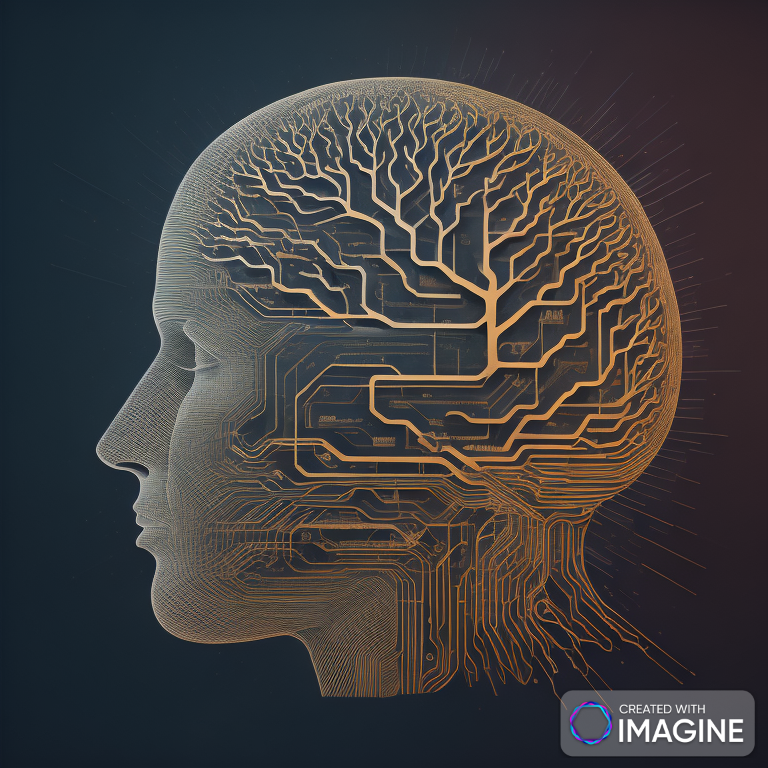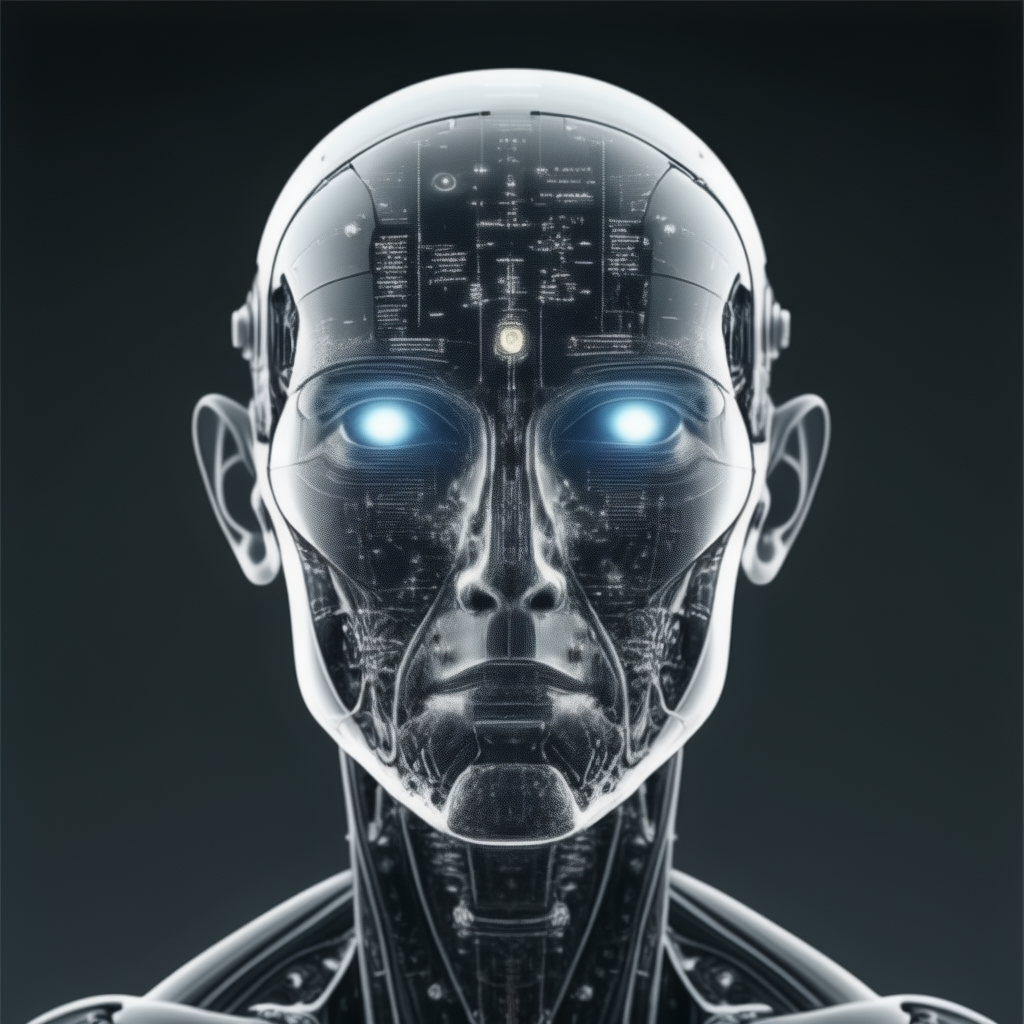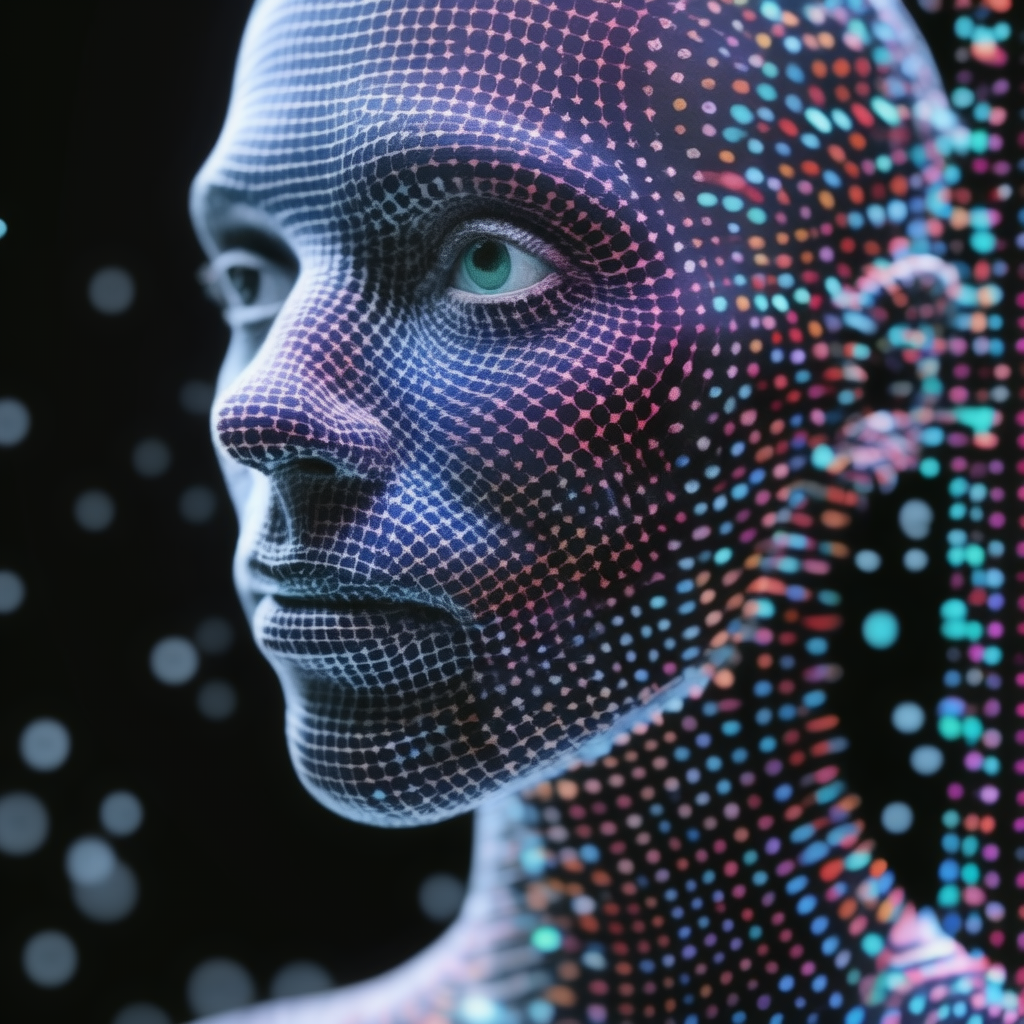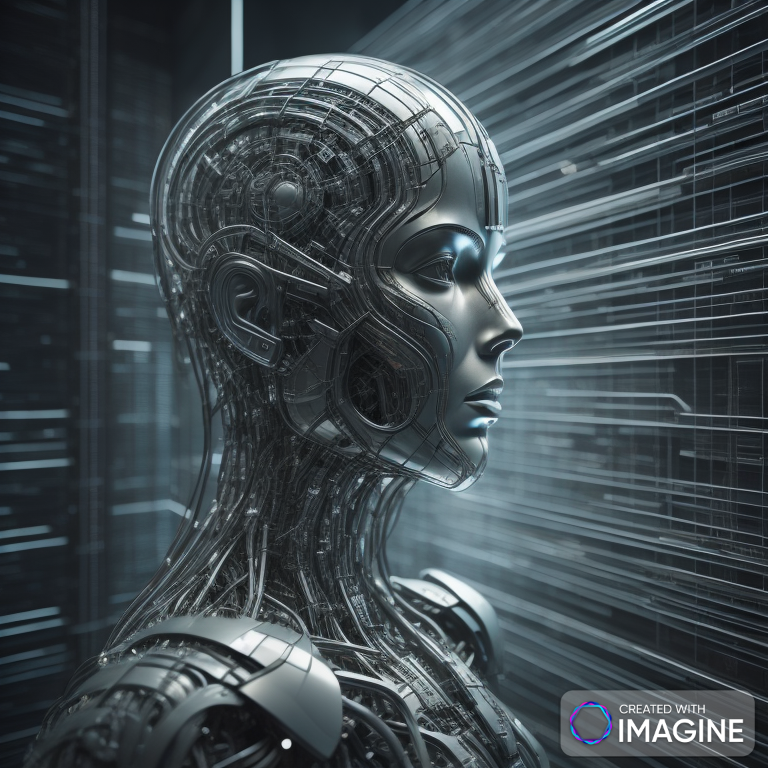Introduction: Unraveling the Limits of AI
In the intricate tapestry of artificial intelligence (AI), two fundamental concepts—decidability and computability — play a pivotal role in defining the boundaries of what AI systems can achieve. As we delve into the realms of algorithmic decision-making and problem-solving, understanding the implications of decidability and computability becomes paramount.
Decidability: The Boundaries of Algorithmic Solvability
Decidability, in the context of AI, refers to the ability of an algorithm to determine the truth or falsehood of a statement within a given problem space. The roots of decidability trace back to the profound work of mathematician and logician Alan Turing.
Alan Turing’s Halting Problem: The Decidability Conundrum
Turing’s seminal contribution to the decidability discourse is encapsulated in the Halting Problem. This problem poses a simple yet profound question: Can an algorithm decide whether another algorithm, given a specific input, will eventually halt or continue running indefinitely? Turing’s proof, using a diagonal argument, establishes that such a universal algorithm for deciding halting does not exist. This revelation has profound implications for the limits of algorithmic predictability within AI systems.
Computability: The Essence of Algorithmic Solvability
Computability, closely intertwined with decidability, addresses the broader question of what problems can be solved algorithmically. It extends beyond determining the truth or falsehood of statements to encompass the notion of algorithmic solvability for a wide array of problems.
Turing Machines and the Notion of Universal Computation
Central to the concept of computability is the Turing machine, a theoretical model devised by Alan Turing. A Turing machine comprises an infinite tape, a read/write head, and a set of rules that dictate its operations. Turing machines serve as the foundation for understanding what can be algorithmically computed.
Church-Turing Thesis: Universality of Turing Machines
The Church-Turing Thesis asserts the equivalence of Turing machines with any algorithmic process that can be effectively computed. While it remains a hypothesis, the thesis provides a conceptual cornerstone for defining the boundaries of computability.
Implications for Artificial Intelligence: Navigating the Limits
In the realm of AI, decidability and computability cast shadows on the prospect of solving certain classes of problems. As we envision AI systems that can autonomously reason, learn, and adapt, these foundational concepts delineate the challenges that transcend algorithmic prowess.
Undecidability in AI Systems: Practical Considerations
Undecidability manifests in AI systems when faced with problems akin to the Halting Problem. For instance, determining the general solvability of certain algorithmic tasks may be an undecidable proposition.
Computational Complexity: Practical Bounds on Efficiency
While a problem might be decidable, the efficiency of algorithms in solving it becomes a critical concern. Computational complexity theory grapples with classifying problems based on their inherent difficulty and the resources required for their solution. NP-completeness, a notable concept, sheds light on problems where verifying a solution is easy, but finding a solution is computationally challenging.
Decidability and computability serve as navigational beacons in the uncharted territories of artificial intelligence. Acknowledging their existence and implications equips AI practitioners with a realistic perspective on the limits of algorithmic reasoning. As AI continues to evolve, the dance between decidability and undecidability, computability and intractability, shapes the landscape of possibilities, ensuring that we tread with awareness in the ever-expanding realm of artificial intelligence.
Extended Discussion: Navigating the Nuances of Decidability and Computability
Decidability Revisited: Turing Machines and the Limits of Prediction
Consider the implications for autonomous systems making decisions in dynamic environments. The inability to predict the termination of certain algorithms might introduce uncertainties in critical decision-making processes.
Oracle Machines and the Limits of Decidability
Expanding on the notion of decidability, the introduction of Oracle machines adds layers of complexity. An Oracle machine, equipped with an oracle—a theoretical entity capable of solving specific undecidable problems—illustrates that while some problems may be undecidable in a general sense, they become decidable with additional information or specialized tools.
In practical terms, this could be likened to situations where certain problems seem insurmountable until a breakthrough insight or technology transforms them into manageable challenges.
Real-world Implications of Undecidability
In practical AI scenarios, undecidability surfaces when dealing with complex optimization problems, heuristic algorithms, and non-computable functions. The Halting Problem’s undecidability, for instance, reflects the inherent challenge of predicting the behavior of algorithms under certain conditions.
Computability Explored: Beyond Turing Machines
Non-Turing Models of Computation
While Turing machines provide a foundational understanding of computability, exploring alternative models of computation enriches the discourse. Cellular automata, lambda calculus, and quantum computation introduce nuances that extend the spectrum of what is computationally possible.
Delving into the realm of quantum computing, where bits can exist in multiple states simultaneously, challenges the binary perspective of classical computation. This introduces a paradigm shift in how we conceptualize problem-solving possibilities.
Limits of Algorithmic Solvability in Quantum Computing
The advent of quantum computing challenges classical notions of computability. Quantum computers, with their ability to perform parallel computations, delve into problem-solving territories that classical algorithms find daunting. Understanding the interplay between classical and quantum models broadens our perspective on the boundaries of computability.
Practical Considerations in AI Systems: Bridging Theory and Application
Heuristic Approaches and Approximate Solutions
In AI applications, especially in machine learning and optimization, heuristics often circumvent the challenges posed by undecidability. Heuristic algorithms, while not guaranteeing optimal solutions, provide practical and often acceptable answers to complex problems.
Machine Learning’s Encounter with the Limits
Machine learning algorithms, particularly those built on neural networks, wrestle with the boundaries of decidability. The interpretability of deep learning models and the potential for undecidability in their decision-making processes introduce a layer of uncertainty in AI applications.
Decidability Revisited: Turing Machines and the Limits of Prediction
Real-world Implications of Undecidability
Limits of Algorithmic Solvability in Quantum Computing
The advent of quantum computing challenges classical notions of computability. Quantum computers, with their ability to perform parallel computations, delve into problem-solving territories that classical algorithms find daunting. Understanding the interplay between classical and quantum models broadens our perspective on the boundaries of computability.
Consider scenarios where traditional computers struggle with exponentially complex problems, and quantum computers offer a potential avenue for more efficient solutions.
Practical Considerations in AI Systems: Bridging Theory and Application
Heuristic Approaches and Approximate Solutions
In AI applications, especially in machine learning and optimization, heuristics often circumvent the challenges posed by undecidability. Heuristic algorithms, while not guaranteeing optimal solutions, provide practical and often acceptable answers to complex problems.
This becomes crucial in fields like route optimization or financial modeling, where real-time decision-making benefits from heuristic solutions that balance efficiency and computational feasibility.
Machine Learning’s Encounter with the Limits
Machine learning algorithms, particularly those built on neural networks, wrestle with the boundaries of decidability. The interpretability of deep learning models and the potential for undecidability in their decision-making processes introduce a layer of uncertainty in AI applications.
Consider the ethical implications when AI systems operate in contexts where transparency is essential, such as healthcare or legal decision support systems.
Ethical Dimensions: Decidability, Bias, and Accountability
Bias and Fairness in Decision-making
Decidability intersects with ethical considerations in AI, especially regarding biases in algorithmic decision-making. The inherent biases in training data and the opacity of certain machine learning models raise questions about fairness and accountability in AI systems.
Imagine an AI-driven hiring system that, due to biased training data, inadvertently perpetuates gender or racial biases. Decisions made by such systems underscore the ethical imperative for ongoing scrutiny and bias mitigation.
Addressing Ethical Challenges Through Algorithmic Transparency
To mitigate ethical concerns, there is a growing emphasis on algorithmic transparency. Efforts to develop interpretable machine learning models and ethical guidelines for AI practitioners aim to ensure that decisions made by AI systems align with societal values and norms.
This transparency becomes a cornerstone in ensuring accountability and aligning AI systems with human values, preventing unintended consequences and reinforcing public trust.
Continued exploration, ethical considerations, and a commitment to transparency form the bedrock of a future where AI not only solves complex problems but does so with a deep understanding of its own limitations and societal impact.
Augmenting the Discussion: Unraveling Further Dimensions of Decidability and Computability
Decidability Enigma: Navigating Through Computational Complexity
Complexity Theory and the P versus NP Problem
Venturing into the realm of complexity theory, the P versus NP problem emerges as a captivating facet. The question of whether every problem that can be verified quickly (in polynomial time) can also be solved quickly (in polynomial time) amplifies the intricacies of decidability. A detailed exploration of this problem sheds light on the fundamental challenges in classifying problems based on their computational complexity.
Consider the practical implications: if P equals NP, many problems deemed computationally infeasible could suddenly become efficiently solvable. Conversely, the potential dichotomy introduces a layer of uncertainty into the landscape of algorithmic efficiency.
Parallel Computation and Decidability
Expanding the horizon to parallel computation introduces a fascinating dimension. While classical Turing machines operate sequentially, parallel computing explores simultaneous execution of multiple processes. This prompts an inquiry into how decidability adapts in a parallel computational framework.
Theoretical models such as the Parallel Random Access Machine (PRAM) delve into the intricacies of parallel computation. Understanding the interplay between parallelism and decidability opens avenues for conceptualizing more efficient problem-solving paradigms.
Computability Quest: Quest for the Ultimate Algorithm
Algorithmic Information Theory and Incompleteness
Algorithmic Information Theory (AIT), a branch of information theory that connects information content and algorithmic complexity, adds depth to the understanding of computability. The concept of Kolmogorov complexity, which measures the shortest description length of an object, intertwines with Gödel’s incompleteness theorems.
Unraveling the tapestry of AIT involves grappling with the limits of algorithmic compression. The inherent tension between expressiveness and succinctness in algorithmic representations contributes to the broader discourse on what can be algorithmically captured and what eludes formalization.
Hypercomputation and Beyond Turing Limits
Exploring the hypothetical realm of hypercomputation pushes the boundaries of classical Turing limits. Hypercomputation posits computational models that transcend Turing machine capabilities, delving into the speculative terrain of solving problems deemed undecidable by classical standards.
While hypercomputation exists primarily in the realm of theoretical exploration, its consideration prompts contemplation on the nature of computation and the theoretical frontiers beyond which algorithms might transcend classical constraints.
Application Paradox: Pragmatism Amid Theoretical Constraints
Everyday AI: Operating in the Real World
Bringing the discussion down to practical applications, the challenges of decidability and computability manifest in the real-world deployment of AI systems. Understanding the balance between theoretical constraints and pragmatic problem-solving becomes paramount.
Consider the dichotomy: while certain problems remain theoretically undecidable or computationally complex, AI systems routinely navigate these challenges with heuristic approaches, approximation algorithms, and optimization techniques. This pragmatic paradigm highlights the adaptability of AI in addressing real-world complexities.
Human-in-the-Loop Computing
Incorporating the human element into computation introduces an intriguing dimension. Human-in-the-loop computing acknowledges the cognitive strengths of humans in areas where algorithms might struggle. This collaborative approach, blending AI capabilities with human intuition and judgment, circumvents certain theoretical limitations.
Imagine a scenario where an AI system, recognizing its own limitations in a complex decision-making process, seamlessly involves a human collaborator to provide nuanced insights. This fusion of AI and human intelligence exemplifies a harmonious coexistence where theoretical constraints meet practical adaptability.
Towards Ethical AI: Decidability, Bias Mitigation, and Responsible Innovation
Algorithmic Fairness and Bias Mitigation
In the ethical domain, the intersection of decidability and bias mitigation takes center stage. Acknowledging that certain decisions may be undecidable or computationally complex, the ethical imperative becomes paramount. Efforts to mitigate biases in AI algorithms, ensuring fair and equitable outcomes, align with the broader goal of responsible AI deployment.
Consider the evolution of fairness-aware machine learning, where algorithmic interventions seek to rectify biases in training data and decision outputs. The conscientious pursuit of fairness within the bounds of computational feasibility becomes a cornerstone in fostering ethical AI practices.
Interdisciplinary Perspectives: Bridging Gaps for Holistic AI Governance
Expanding the lens to interdisciplinary collaboration, the synergy between computer science, ethics, law, and social sciences becomes pivotal. Bridging the gaps between theoretical foundations and ethical considerations requires a concerted effort from diverse fields.
Imagine a collaborative framework where computer scientists, ethicists, and legal scholars collectively shape policies and guidelines for AI governance. This interdisciplinary synergy fosters a holistic approach that not only recognizes theoretical constraints but also integrates ethical frameworks into the fabric of AI innovation.
Conclusion: Navigating Complexity with Consciousness
In conclusion, the nuanced landscape of decidability and computability in artificial intelligence demands a conscious navigation of complexity. Acknowledging the theoretical limits while exploring practical adaptations ensures that AI systems contribute positively to society. As we delve into the depths of undecidability and the expanses of computability, the journey becomes a testament to the evolving synergy between theoretical foundations and real-world applications in the dynamic field of artificial intelligence.
In Summation: A Continuum of Inquiry and Innovation
In summary, the exploration of decidability and computability unveils a continuum of inquiry and innovation. From complexity theory’s enigmas to algorithmic information theory’s intricacies, and from pragmatic AI applications to ethical considerations, the landscape is vast and multifaceted.
In conclusion, the nuanced landscape of decidability and computability in artificial intelligence demands a conscious navigation of complexity. Acknowledging the theoretical limits while exploring practical adaptations ensures that AI systems contribute positively to society. As we delve into the depths of undecidability and the expanses of computability, the journey becomes a testament to the evolving synergy between theoretical foundations and real-world applications in the dynamic field of artificial intelligence.
As we navigate this continuum, the evolving discourse on decidability and computability becomes a testament to the perpetual curiosity that propels AI research. The quest to understand theoretical constraints, coupled with the pragmatism of real-world applications and the ethical imperative of responsible innovation, defines the trajectory of AI’s journey into uncharted territories.








Your point of view caught my eye and was very interesting. Thanks. I have a question for you.
Thanks for sharing. I read many of your blog posts, cool, your blog is very good.